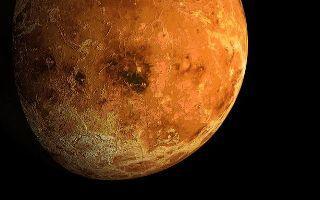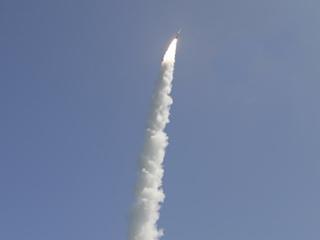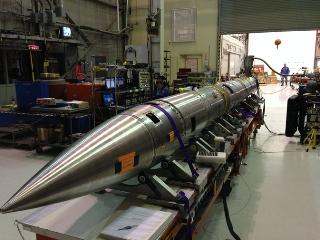
WASHINGTON (PTI): In a breakthrough, scientists have found that a Martian volcano, nearly twice as tall as Mount Everest, may have been home to one of the most recent habitable environments yet found on the Red Planet.
Arsia Mons is the third tallest volcano on Mars and one of the largest mountains in the solar system.
The new analysis of the landforms surrounding Arsia Mons by Brown University researchers found that eruptions along the volcano's northwest flank happened at the same time that a glacier covered the region around 210 million years ago.
The heat from the eruptions would have melted massive amounts of ice to form englacial lakes - bodies of water that form within glaciers like liquid bubbles in a half-frozen ice cube.
The ice-covered lakes of Arsia Mons would have held hundreds of cubic kilometres of meltwater, according to calculations by Kat Scanlon, a graduate student at Brown who led the work.
While 210 million years ago might not sound terribly recent, the Arsia Mons site is much younger than the habitable environments turned up by Curiosity and other Mars rovers.
Those sites are all likely older than 2.5 billion years.
The fact that the Arsia Mons site is relatively young makes it an interesting target for possible future exploration.
Recently developed climate models for Mars that take into account changes in the planet's axis tilt suggest that Mars's giant mid-latitude mountains - Ascraeus Mons, Pavonis Mons and Arsia Mons - were prime locations for glaciation around 210 million years ago.
Working with James W Head, Lionel Wilson and David R Marchant from the Lancaster Environmental Centre in the UK, Scanlon looked for evidence that hot volcanic lava may have flowed in the region the same time that the glacier was present.
Using data from NASA's Mars Reconnaissance Orbiter, Scanlon found pillow lava formations, similar to those that form on Earth when lava erupts at the bottom of an ocean.
Based on the sizes of the formations, Scanlon could estimate how much lava would have interacted with the glacier.
She found that two of the deposits would have created lakes containing around 40 cubic kilometres of water each.
Another of the formations would have created around 20 cubic kilometres of water.
Even in the frigid conditions of Mars, that much ice-covered water would have remained liquid for a substantial period of time. Scanlon's back-of-the-envelope calculation suggests the lakes could have persisted or hundreds or even a few thousand years.
That may have been long enough for the lakes to be colonised by microbial life forms, if in fact such creatures ever inhabited Mars, researchers said.
The research is published in the journal Icarus.
 Previous Article
Previous Article Next Article
Next Article












The Indian Air Force, in its flight trials evaluation report submitted before the Defence Ministry l..
view articleAn insight into the Medium Multi-Role Combat Aircraft competition...
view articleSky enthusiasts can now spot the International Space Station (ISS) commanded by Indian-American astr..
view article